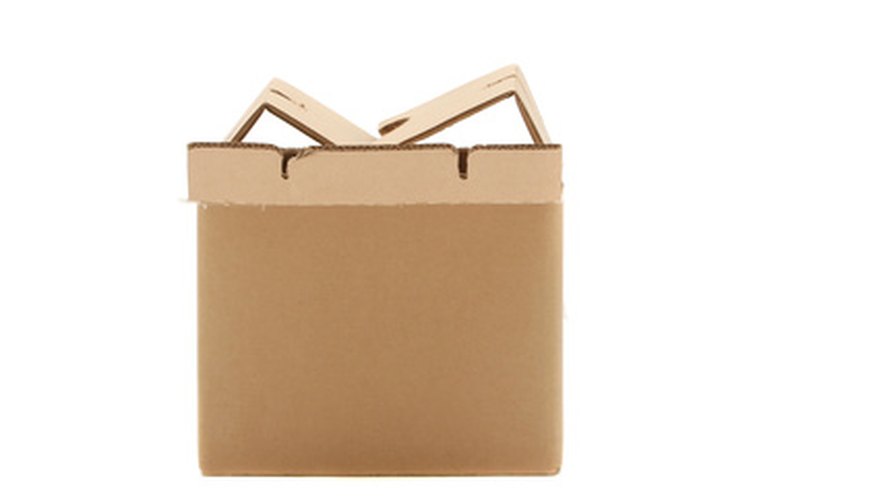Corrugated cardboard is a lightweight, low cost and potentially eco-friendly storage and packaging material. The material was originally invented in England as a liner for tall hats but the design was patented as a shipping material in 1871. Ever since, it's been a ubiquitous part of packaging, with millions of tons of the material being produced every year.
Light Weight
The main reason corrguated cardboard gained broad acceptance as a shipping tool is due to its light weight. Prior to its invention, items being shipped were often packaged in heavy wooden crates. A corrugated cardboard design is much lighter than a similarly sized wooden box, which decreases the cost of shipping objects.
Thinness
Corrugated cardboard is manufactured in thin panels, generally less than a 10th of an inch thick. Because of this, its easily stored and takes up less room during shipping.
Strength
Despite its light weight and small size, corrugated cardboard is surprisingly resilient. Argov Box, an Ohio corrugated products manufacturer notes on its website that corrugated cardboard has two parts, linerboard and medium, which combine to give it strength over single-walled cardboard. Linerboard is the paper on both sides of the sheet and the medium is the wavy layer of paper sandwiched between the smooth paper lining. "When placed vertically on its ends, the flutes form vertical columns, capable of supporting considerable amounts of weight," according to Argov.
- Despite its light weight and small size, corrugated cardboard is surprisingly resilient.
- Argov Box, an Ohio corrugated products manufacturer notes on its website that corrugated cardboard has two parts, linerboard and medium, which combine to give it strength over single-walled cardboard.
Strength is measured in two distinct figures: the edge crush test, and the burst test. The edge crush test is a measurement of how much weight is needed to crush a piece of corrugated cardboard standing on an edge. The burst test is a measurement of the pounds per square inch of pressure needed to rupture a cardboard panel. The standard measurements for a typical piece of corrugated cardboard is 14.5kg. for the edge crush test and 90.7kg. per square inch for the burst test.
Recyclability
Corrugated cardboard may be more ecofriendly than you think. Not only is the cardboard itself typically made using a high percentage of recycled material (as much as 95 per cent in some designs), the cardboard is also highly recyclable, yielding a great deal of useful fibre. Corrugated cardboard is also one of the easiest items to find a recycling provider for, as nearly every recycling company is able to process the material. According to the Corrugated Packaging Council nearly 80.7 per cent of the corrugated cardboard produced in 2008 was recovered for recycling.
- Corrugated cardboard may be more ecofriendly than you think.
- Not only is the cardboard itself typically made using a high percentage of recycled material (as much as 95 per cent in some designs), the cardboard is also highly recyclable, yielding a great deal of useful fibre.
